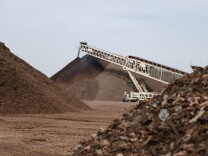
Next Up:
0:00
0:00
-
Listen Listen
Climate & Environment
Some of the country's highest home insurance prices are in the central U.S., a region generally considered to be protected from climate-driven disasters.
Listen
4:32
Sponsor
More Stories
-
$10.5 million will go towards strengthening Santa Anita Debris Dam, which protects communities such as Arcadia, Monrovia and Duarte from flooding and mudflows.
-
Last winter, California's historic rainfall offered scientists an opportunity to understand how the state's dams could hold up to changing seasonal patterns.
-
Time to prep those go bags and clear that brush.
-
Marine mammal treatment centers are overwhelmed by sick sea lions, likely due to a toxic algal bloom off of the Southern California coast.
-
Construction could soon begin on a housing development 18 years in the making, in the hills above Sunland-Tujunga, but local wildlife advocates are rallying for the project to come to a halt.
-
The L.A. Department of Water and Power's Board of Commissioners voted unanimously to end the practice of shutting off power when people can't pay their bills during extreme heat.
-
Getting Food Out Of Landfills Is A Big Climate Solution. So Far California Is Lagging On Its EffortsA new report finds the state missed its 2020 goal and is likely to miss its 2025 goal as well.
-
It’s a combination of geography, atmospheric conditions and how we build.
-
Across Southern California, facilities used to treat marine mammals are full.
-
The exact time of the solstice is determined by where the sun is in the sky. During summer, the sun reaches its highest point of the year at noon and its lowest point at the winter solstice.
-
L.A. requires all new buildings to be all-electric, but retrofitting existing buildings is the bigger challenge — and has implications for renters.
-
It’s one of the reasons the fire department is relying more on mobile water stations for their helicopters.
Researchers found that in drier years, larger animals are more likely to head closer and closer to where people live.
Listen
4:05
Support your source for local news!
In case you missed it
-
911 recordings obtained by LAist shed light on why and how emergency planning continues to leave people with disabilities behind.
-
LAist investigates illicit dumping at three Antelope Valley sites.
-
An LAist investigation found toxic heavy metals in samples of fire retardant collected from the Palisades, Eaton and Franklin fires. Here's what that means.
More Stories
-
California’s electric rates are among the highest in the country. Three big power companies propose charging fixed rates based on income, saying low-income customers will save money. Critics doubt it’ll work.
-
An excessive heat warning is out for the Antelope Valley starting today.
-
The National Oceanic and Atmospheric Administration has proposed "critical habitat" designations in Southern California.
-
The National Weather Service forecasts significant heat for the weekend.
-
Outdoor workers have legal protection in extreme heat, but that's not the case for indoor workers, who can be just as susceptible to heat illness and even death. Enforcing the rules remains an issue.
-
Clear skies, sunshine, and a couple of excessive heat warnings for the deserts remain until Saturday.
-
The largest single-employer strike in U.S. history could frame worker power as a climate solution.
-
Utility-scale solar farms spreading rapidly across the desert Southwest are stressing the region’s already overtaxed groundwater and communities are beginning to push back.
-
Saturday was record breaking. Sunday's going to more of the same, with temperatures cooling around Tuesday.
-
As nights warm and droughts intensify, past models predicting fire behavior have become unreliable. So California is working with analysts and tapping into new technology to figure out how to attack wildfires. Gleaned from military satellites, drones and infrared mapping, the information is spat out in real-time and triaged by a fire behavior analyst.




































